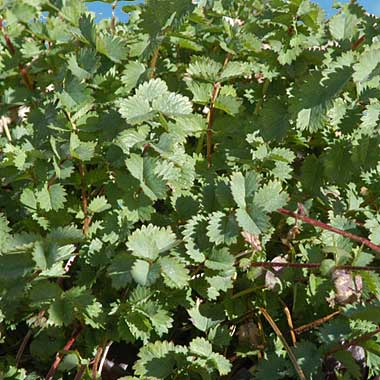


Salad Burnet
Sanguisorba minor

Salad burnet is a useful herb that tolerates poor dry soil
and stays green throughout most of the winter.
As its name suggests its main use is as a salad herb.
The young leaves are the best to use as they are fresh and tender.
It is important to trim the plant regularly to ensure a fresh supply of leaves,
and to remove the flowering stalks if leaves are required for the kitchen.
- Sprigs of salad burnet steeped in wine vinegar give a fine cucumber flavour, and the vinegar can be used in salad dressings.
- The leaves can be used in summer drinks such as Pimms to give a cucumbery flavour and also as a pretty feathery garnish.
- Cosmetically salad burnet leaves are used in herbal facial preparations.
Salad Burnet Sauce
The sauce maybe served hot or cold, with chicken, poached or hard-boiled eggs and seasonal vegetables such as asparagus.
- 2 tbs olive oil
- 300ml crème fraiche
- 1 onion – finely chopped
- 4 tbs chopped salad burnet
- 3 tbs flour
- seasoning
- 300 ml good stock (either chicken or vegetable)
Fry the onion in the oil until it is just starting to brown.
Lower the heat, stir in the flour and cook for one minute.
Gradually add the stock and bring to the boil stirring constantly until the sauce has thickened.
Add the salad burnet leaves and the crème fraiche and mix the sauce well.
Reheat before serving if required hot.
Originally salad burnet was found growing in turf in chalky areas such as the South Downs,
where it provided nutritious grazing for both sheep and cattle.
In the 1600s it was one of the herbs taken to America by the Pilgrim Fathers, where it is now naturalised.
In past times the leaves were steeped in wine and beer for its cooling effect
and also were taken as a cure for gout and rheumatism.